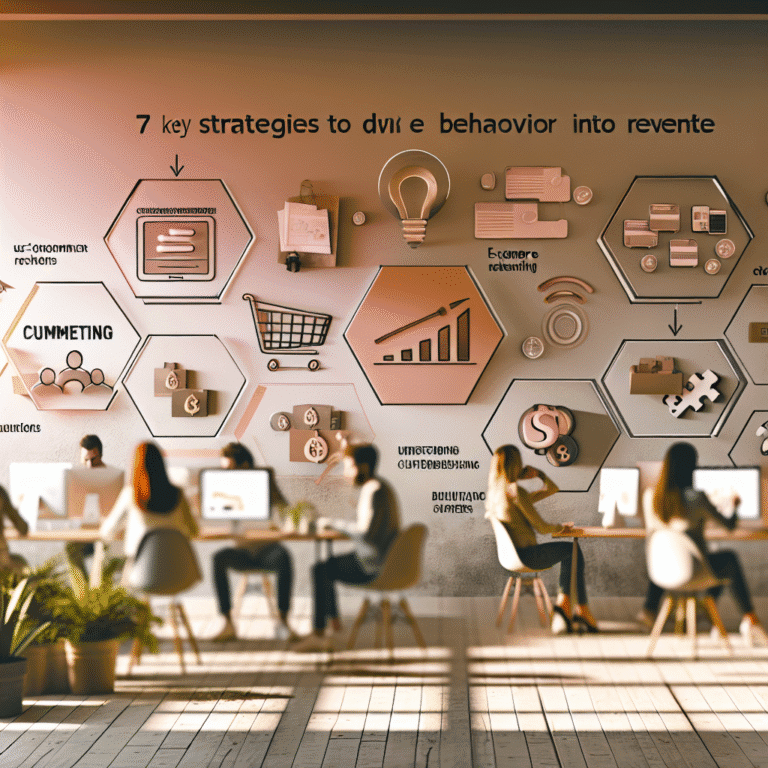Psych Tricks to Boost Ecommerce Sales
Your site’s got all the bells and whistles, but those conversions seem invisible. If logical tweaks aren’t working, it’s time to consider the irrational side of shopping. People make decisions based on emotions, not just facts. Let's explore the ways behavioural psychology can make your sales soar.
Bringing Psychology to Ecommerce
Picture a leaky bucket. That’s your sales funnel. Shoppers drop out halfway, and it’s not always a tech glitch. It’s often just our human brains trying to avoid tough choices. Here’s what might be causing those sneaky leaks:
- People like to hold on tight. Losing £5 feels worse than finding £5.
- Too many options leave us stuck like a rabbit in headlights.
- We trust a flock mentality. If others buy, we think we should too.
- Defaults are comfy. Change is scary.
- Saying yes once means we’re likely to say yes again.
These mental shortcuts can mess with your sales, but with a little tweaking, they can work for you.
Ten Simple Tricks for Smarter Sales
To win a sale, appeal to the brain, not just the wallet. Here’s how:
Show What They’ll Miss
Instead of listing benefits, point out what they’ll lose if they don't act. Something like:
- “Your 20% discount will vanish if you leave.”
- “10 people are looking at this exact coat.”
- “Available for a short time only!”
People feel losses more deeply than gains, so use it to lighting the decision-making fire.
Start Small for Bigger Actions
A tiny commitment today makes way for bigger ones tomorrow. This foot-in-the-door trick can work wonders:
- Include wishlist buttons
- Use fit-finder tools that recommend sizes.
This method is like asking them to dip a toe before they dive into buying.
Add a Dash of Trust
Shoppers are cautious. They need nudges in the right direction. Providing social proof reassures them:
- “13 people bought this in the past hour!”
- “4.8 stars from 3,287 reviews.”
- Include customer photos.
Don’t forget: honesty beats quantity. No one’s fooled by dodgy reviews.
Play with Price Anchors
Pricing isn’t just numbers; it’s all in the head. Show buyers value by using comparison tactics:
- “Was £349, now it’s £199.”
- Product tiers where the middle option is the sweet spot.
Just like how a short actor looks taller standing next to a child, relative value is often the key.
Real Urgency and Scarcity
We aren’t as rational as we’d like to think. Short on stock? Shout about it! But never make it up:
- “Only 2 left!”
- Timer counting down on free delivery offers.
Scarcity makes folks scramble to buy before missing out.
Lean on the Experts
We trust people who know their stuff. So show off endorsements:
- “Dermatologist approved.”
- “Featured in GQ’s best lists.”
- “Trusted by 12,000+ fans worldwide.”
Specific is much better than vague here.
Use the Decoy Effect
Present your prices so that one choice looks golden. Set up three options to lead the way:
- Basic: Too bare
- Plus: Just right
- Premium: Overkill for most
The middle option often feels like a bargain because of the extremes on either side.
Make the Default the Hero
People love an easy life. Defaults help them along nicely:
- Pre-filled delivery choices
- Most popular colour pre-selected.
Default settings work better than overwhelming buyers with too much choice.
Trim the Options
Too much variety drags us down. Instead, guide the way with:
- Top staff picks
- Filters like “under £50.”
If you limit choices like Allbirds does with colours, decisions feel easier.
Give First, Ask Later
People want to pay back favours. Offer something small and you’ll see it returned:
- Free gifts with a purchase.
- Downloadable guides or advice.
It’s not manipulation; it’s good manners — and it makes people more likely to buy.
Brands Who’ve Nailed It
Don't just take our word for it. Big brands use these tactics daily:
- Nudie Jeans saw a 22% rise in clicks with “As worn by…” notes.
- Casper sped up transactions by pre-selecting popular sizes.
- Gymshark integrated real-time “selling fast” notes — a true signal, not a gimmick.
If your perfect site isn’t raking in the sales, it’s not about tech; it’s about appealing to those very human behaviours.
Remember, people convert when they feel, not when they’re flooded with logic. Less stress and fewer choices mean happier, more decisive shoppers.
Go ahead, try one of these tweaks this week. Whether it’s anchoring a price or adding a touch of genuine urgency, you might just find your conversions suddenly show up at last.





